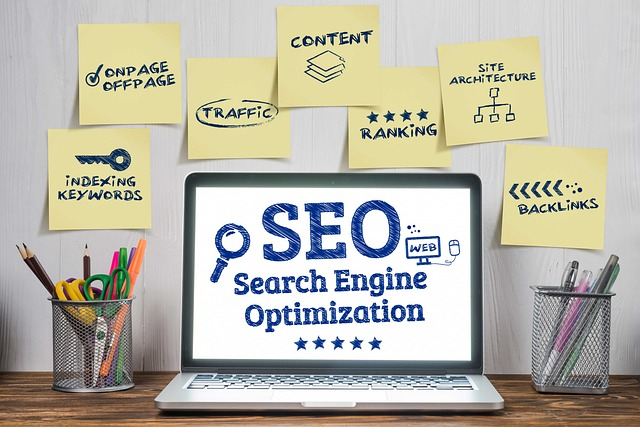Understanding the Differences: SEO vs SEM
Are you puzzled by the marketing jargon of SEO and SEM? It’s vital to know that these two acronyms represent very different strategies for web traffic. In this blog post, we’ll demystify SEO (Search Engine Optimization) and SEM (Search Engine Marketing), breaking down their differences and benefits in easy-to-understand terms.
Ready to gain the upper hand on your online presence? Let’s dive right in!
Key Takeaways
- SEO (Search Engine Optimization) focuses on improving a website’s visibility in unpaid search results, while SEM (Search Engine Marketing) combines paid and organic methods for visibility.
- SEO uses strategies like keyword research and optimizing webpages to attract more unpaid traffic, while SEM includes paid advertising like pay-per-click campaigns.
- SEO is cost-effective and provides long-term results, while SEM offers quick visibility and targeting of ad-heavy keywords.
- Both SEO and SEM work together to drive website traffic by complementing each other’s strengths.

What is SEO?
SEO, which stands for search engine optimization, focuses on improving a website’s visibility in organic search results.
Definition
SEO stands for Search Engine Optimization. It makes a website more visible in unpaid, organic search results. SEM stands for Search Engine Marketing. It uses both paid and free methods to get traffic to a site.
Their goal is the same, but they use different ways to reach it.
Focus on organic search
SEO is all about improving a website’s visibility in organic search results. This means that when people search for something on search engines like Google, SEO helps the website to appear higher up in the list of results.
It uses strategies such as keyword research, optimizing webpage content, building quality backlinks, and making sure the technical aspects of the website are working well. The goal is to attract more unpaid traffic to the site and increase its rankings on search engine pages.
By focusing on organic search, businesses can generate more web traffic without having to pay for ads or promotions.
Strategies of SEO (keyword research, on-page, off-page, technical)
SEO strategies involve various tactics to improve a website’s visibility and drive organic traffic. One important strategy is keyword research, which involves identifying the right keywords that people use when searching for products or services.
On-page SEO optimizations are made directly on the website itself, such as optimizing meta tags, headers, and content. Off-page strategies focus on building backlinks from other websites to increase the credibility of the site.
Technical SEO involves optimizing factors like site speed, mobile-friendliness, and crawlability to ensure search engines can easily access and understand the website’s content. These strategies work together to enhance a website’s search engine rankings and attract more organic traffic.

What is SEM?
SEM focuses on both paid and organic search, making it different from SEO which primarily focuses on organic search.
Focus on both paid and organic search
Search engine marketing (SEM) is a marketing strategy that focuses on both paid and organic search methods. It combines the use of paid advertising, such as pay-per-click (PPC) campaigns, with optimizing a website’s visibility in organic search results.
This means that businesses using SEM are able to target specific keywords and generate traffic through both paid ads and unpaid methods. By utilizing both paid and organic search strategies, businesses can maximize their visibility in search engine results pages (SERPs) and drive more targeted traffic to their websites.
Key differences between SEO and SEM (targeted search results, time and cost differences)
SEO and SEM have key differences in terms of targeted search results, time, and cost. With SEO, the focus is on organic search results, using strategies like keyword research and optimizing web pages.
This helps improve a website’s visibility over time through unpaid advertising methods. On the other hand, SEM combines paid advertising with organic search to generate traffic. It allows for immediate visibility through paid ads but requires a budget for ad spend.
Unlike SEO which takes time to show results, SEM can provide faster outcomes in terms of generating traffic. Additionally, while SEO mainly relies on unpaid tactics, SEM involves both paid and unpaid methods to drive traffic to a website.
Which should marketers use?
Marketers should consider using SEO for long-term and cost-effective results, while SEM can provide quick results and target ad-heavy keywords.
Benefits of SEO (long-term, cost-effective)
SEO offers several benefits that make it a valuable long-term and cost-effective strategy for businesses. By focusing on improving organic search visibility, SEO helps drive targeted traffic to a website without the need for paid advertising.
This not only saves money but also builds trust and credibility with users who are more likely to click on organic search results. Additionally, implementing good SEO practices can lead to higher rankings in search engine result pages, increasing the chances of attracting even more organic traffic over time.
With continuous monitoring and adjustments, SEO allows businesses to stay competitive and maintain a steady flow of relevant web traffic without relying solely on costly paid ads.
Benefits of SEM (quick results, ad-heavy keywords)
SEM offers several benefits, including quick results and the ability to target ad-heavy keywords. With SEM, businesses can see immediate visibility and results through paid advertising.
This means that they don’t have to wait for their website to climb up the organic search rankings. Additionally, SEM allows marketers to target specific keywords that are highly competitive or relevant to their industry.
By bidding on these ad-heavy keywords, businesses can increase their chances of getting clicks and conversions from potential customers who are actively searching for products or services like theirs.

How SEO and SEM work together
SEO and SEM work together to drive traffic to a website by complementing each other’s strengths.
Complementary role in driving traffic
SEO and SEM play complementary roles in driving traffic to a website. SEO focuses on optimizing a website’s visibility in organic search results, while SEM combines paid advertising with organic methods.
When used together, they can generate maximum exposure and attract more visitors. SEO helps improve the site’s rankings in search engine results, leading to higher organic traffic.
On the other hand, SEM allows businesses to target specific keywords and demographics through paid ads, resulting in immediate visibility and potential customers. By leveraging both strategies, businesses can achieve long-term growth while also gaining quick results from targeted campaigns.
Future directions for SEO and SEM
The future of SEO and SEM is constantly evolving as search engines update their algorithms and user behaviors change. One important trend for SEO is the growing importance of mobile optimization, as more people use their smartphones to search for information.
Voice search is also on the rise, so optimizing for voice queries will become crucial. For SEM, artificial intelligence and machine learning will play a significant role in targeting ads to specific audiences and improving campaign performance.
Additionally, incorporating video into both SEO and SEM strategies will become more prevalent as video content continues to gain popularity. Overall, staying up-to-date with these emerging trends will be essential for businesses looking to maximize their online visibility and drive targeted traffic to their websites.
Conclusion
In conclusion, understanding the differences between SEO and SEM is crucial for marketers. While SEO focuses on organic search and long-term results, SEM combines paid and organic methods for quicker visibility.
Both strategies play a significant role in driving traffic to websites, and businesses should consider their goals when deciding which approach to prioritize.
FAQs
1. What are SEO and SEM in marketing terms?
SEO is about boosting organic traffic to your company site, while SEM involves paid search strategies for quicker traffic acquisition.
2. How does an understanding of SEO vs SEM help in online advertising?
By learning the differences between SEO and SEM, you can figure out if free content marketing or paid ads will drive more visitors to your landing page.
3. Can I use both SEO and PPC together for my business?
Yes! Combining SEO with pay-per-click (PPC) allows businesses to cover all possible traffic patterns – both organic and paid ones.
4. How can you tell if the methods work?
You need to keep monitoring organic traffic from your SEO efforts and track conversion rates from your PPC campaigns to measure their success.
5. Is there a reason to worry over unpaid or paid traffic generation?
Both have value; analyzing organic traffic might give long-term results, whereas getting direct yet temporary influx through Paid Traffic could push immediate sales.
from Brand Rainmaker | SEO For Lawyers brandrainmaker.com/seo-vs-sem/
via IFTTT
via Brand Rainmaker brandrainmaker.blogspot.com...